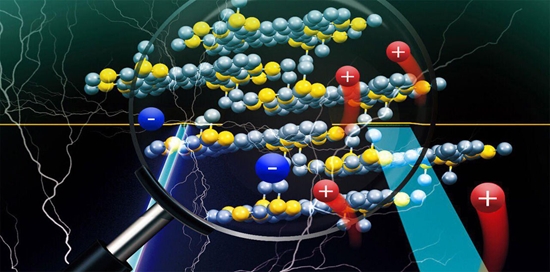Manufacture of nano-electrodes for supercapacitors
TMU researchers led by Dr. Mirfazlullah Mousavi, in collaboration with UCLA's Richard Kaner Research Group, designed an energy storage device that works across the pH range an efficient performance.

TMU researchers led by Dr. Mirfazlullah Mousavi, in collaboration with UCLA's Richard Kaner Research Group, designed an energy storage device that works across the pH range an efficient performance.
The pursuit of new negative electrode materials for redox supercapacitors with a high capacitance, boosted energy, and high rate capability is still a tremendous challenge. Herein, we report a Nile Blue conjugated graphene aerogel (NB– GA) as a negative electrode material with excellent pseudocapacitive performance (with specific capacitance of up to ۴۸۳ F g– 1 at ۱ A g– 1) in all acidic, neutral, and alkaline aqueous electrolytes. The contribution from capacitive charge storage represents ۹۳.۴٪ of the total charge, surpassing the best pseudocapacitors known. To assess the feasibility of NB– GA as a negative electrode material across the full pH range, we fabricated three devices, namely, a symmetric NB– GA||NB– GA device in an acidic (۱.۰ M H2SO4) electrolyte, an NB– GA||MnO2 device in a pH-neutral (۱.۰ M Na2SO4) electrolyte, and an NB– GA||LDH (LDH = Ni– Co– Fe layered double hydroxide) device in an alkaline (۱.۰ M KOH) electrolyte. The NB– GA||NB– GA device exhibits a maximum specific energy of ۲۲.۱ Wh kg– 1 and a specific power of up to ۸.۱ kW kg– 1; the NB– GA||MnO2 device displays a maximum specific energy of ۵۵.۵ Wh kg– 1 and a specific power of up to ۱۴.۹ kW kg– 1, and the NB– GA||LDH device shows a maximum specific energy of ۱۰۸.۵ Wh kg– 1 and a specific power of up to ۲۵.۱ kW kg– 1. All the devices maintain excellent stability over ۵۰۰۰ charge– discharge cycles. The outstanding pseudocapacitive performances of the NB– GA nanocomposites render them a highly promising negative electrode material across the entire pH range. This article, published in the journal ACS Nano.
